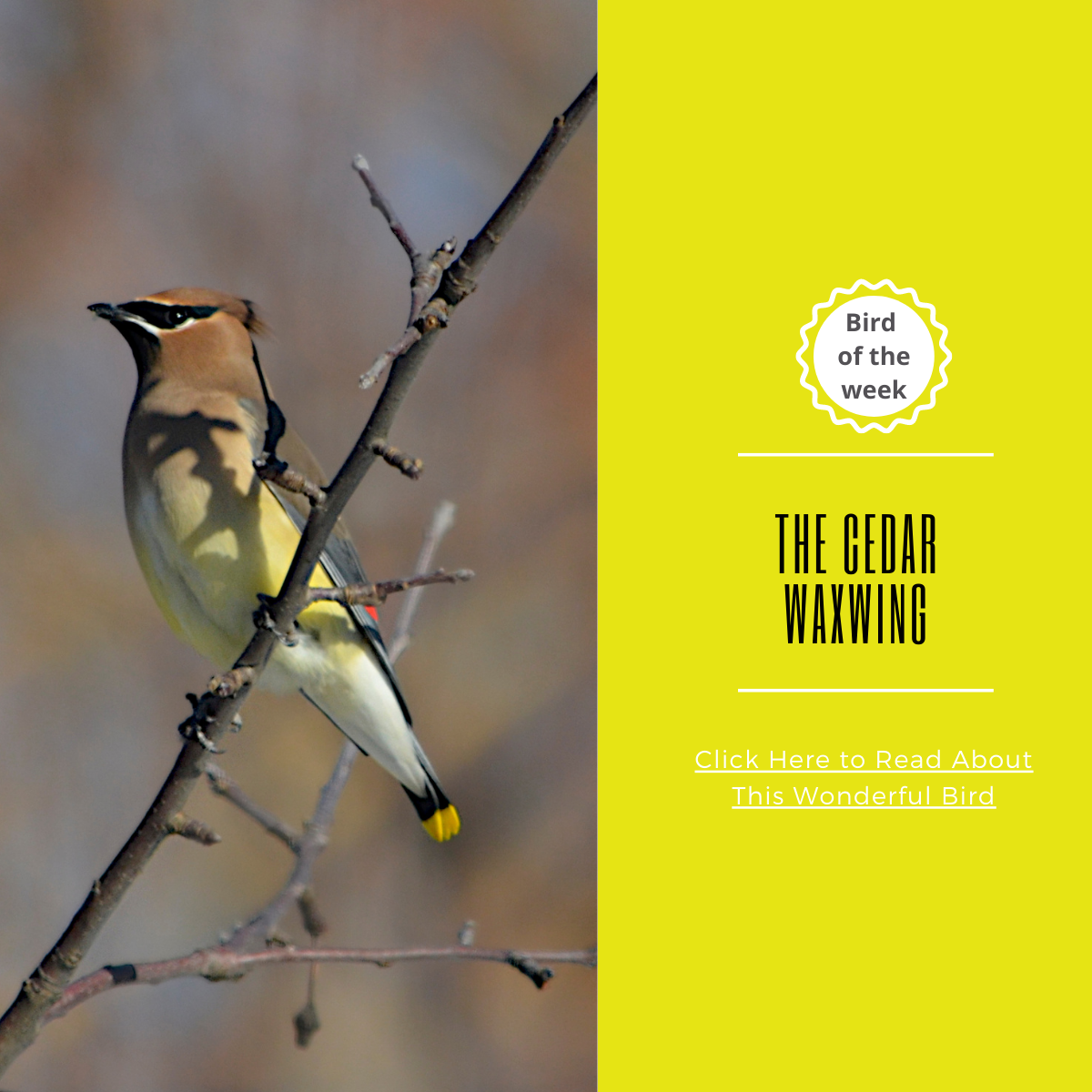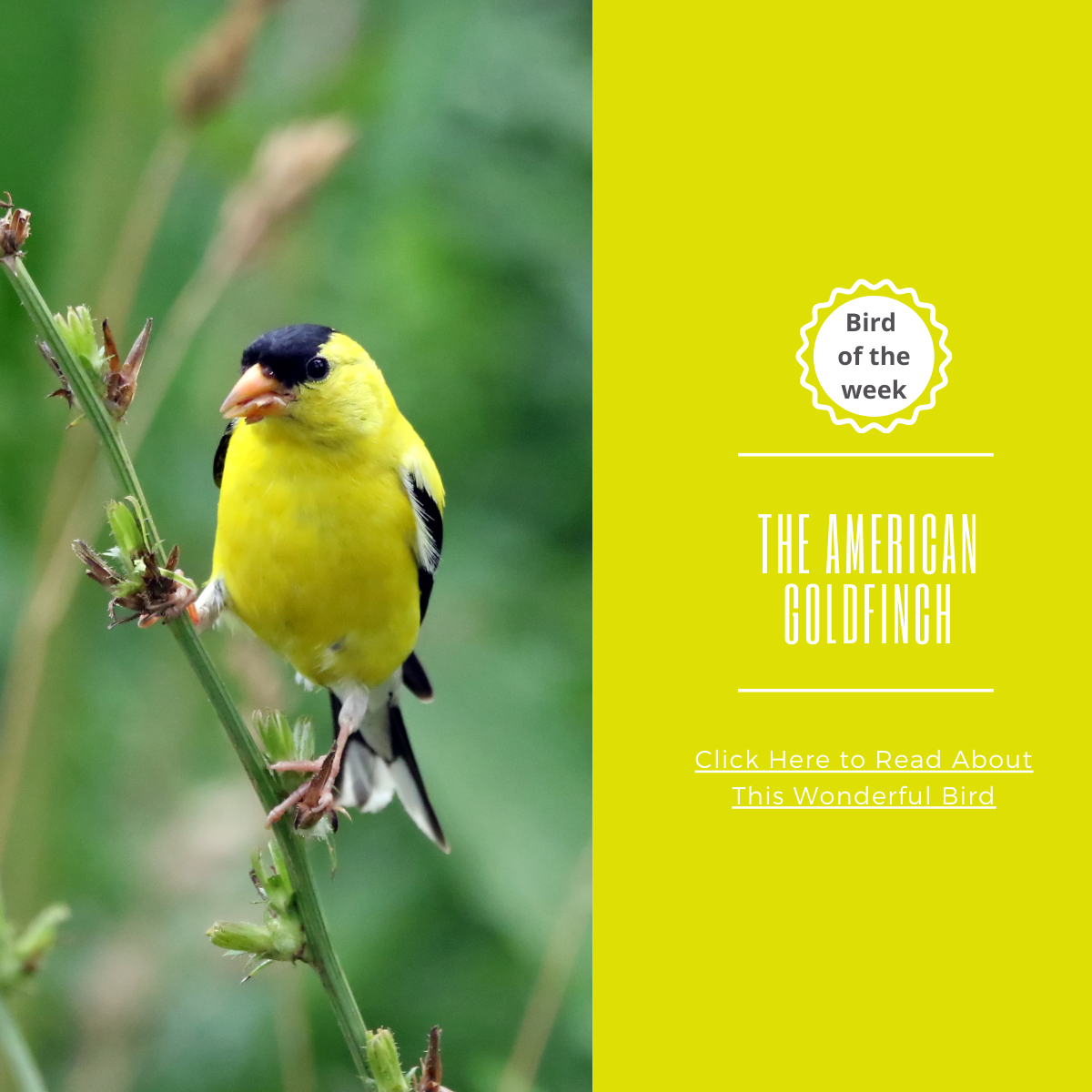
Well, hello there, you handsome thing -so nice of you to come!
Having a cedar waxwing in your yard is a special pleasure. They will visit for as long as there are berries to peck and as soon as there are no more, they are off.
So cherish those moments while they are still around. It’s a treat to watch them fly in large flocks and chatter in their unmistakable high pitched chirps, while making themselves comfortable on a berry branch. Maybe you will catch them passing a berry from beak to beak until one of them finally swallows it! Who said winter doesn't have its perks.
Of course the name implies who they are - “red cedar” lovers (aka juniper) which offers its juicy blue fruit.
These sleek flyers can reach up to 25 miles per hour as they fly. They breed all the way from southern Canada to Puerto Rico, roosting in deciduous, coniferous and mixed forests, grasslands, open fields - and any area near a stream. However, if you plant their favourite berries in your backyard or offer a bird feeder with some tasty morsels - they could well become family!
They usually come and go in the winter so there is no real pattern - they can suddenly arrive at your backyard and next season not be there at all! Or… they may be in your garden at the end of summer and the beginning of winter and then suddenly disappear.

In case you missed last week's bird-of-the-week: The American goldfinch.
LOOKS
Cedar waxwings are about 6–7 inches long and weigh around 1 oz - the same weight as a pencil or a slice of bread. They are slightly smaller than the Bohemian waxwing, their close relative.

Easy on the eyes, these songbirds are covered in a brownish-grey sheen, sport a black mask and a flat crest that stands up like a feathered tiara. They have bright pinkish-red droplets on the edge of their secondary wings, the wings that give them flight. This colour comes from a pigment in the berries they eat. The tail is short and square, tipped with a splash of warm yellow (sometimes orange, when consuming exotic honeysuckle fruits) and their bill is short and wide.
Males and females look alike, with their warm yellow-coloured bellies. However, during breeding times, the females are bigger.
Juveniles are streaked on the throat and flaps. They look like adults, but are slightly greyer and with a smaller crest. (A crest in training!) The young’uns don’t yet have the red spots on their wings either.
The oldest observed cedar waxwing was eight years and two months old. However, the average lifespan of a cedar waxwing is around 8 years. Not bad for a songbird!
A quick word on how to tell them apart from Bohemian Cedars, which have similar plumage: check under the belly - if it’s gray, it’s a Bohemian Cedar. Also, if it’s rusty under the tail with small white and yellow markings on the wings - it, too, is a Bohemian.
WHAT DO CEDAR WAXWINGS EAT?

A Cedar waxwing diet consists of 80% fruit. Though their main go-to is the juniper of the red-cedar, sadly these trees are being cut down more and more for building purposes, fence posts or wood for pencils. Cedar waxwings have had to widen their variety of food to survive.
They typically feed near the tips of fruit-bearing branches - often hanging upside down to pluck favorites such as cherries, crabapples and hawthorn fruits which are high in sugar content.
WHAT BIRD-FEEDERS DO WAXWING CEDARS PREFER?
Cedar waxwings prefer platform feeders with an assortment of berries, bite-size cut apples and mealworms.
An assortment of berries is a great way to attract them. When you see which are most popular, you will know what to offer in the future.
In the summer: Strawberries, blueberries, blackberries, serviceberries, mulberries, raspberries and grapes.
In the winter: cedar berries, mistletoe, madrone, juniper, mountain ash, honeysuckle, crabapple, hawthorn and Russian olive fruits.
WHAT DO CEDAR WAXWINGS SOUND LIKE?
Cedar waxwings are so beautiful that they forgot to invest in their singing! They don’t really “sing”, rather fly around in huge flocks and chirp in high pitched tones. They trill, whistle, screech and even sigh. But sing? Despite the fact that they are songbirds - one couldn’t call the sounds they make singing. But they still produce a sweet sound!
Check out for yourselves:
NESTING
Like the Carolina wrens we wrote about last week, cedar waxwings nest later in the summer than most songbirds, starting from June and well into August. This is for the same reason as the American goldfinches - so this period will coincide with the ripening of their chosen berries.
Once the happy couple meet they stay monogamous. The male will court the female with a hopping jig and will feed her with berries, insects or flower petals in a demonstration of his devotion.. If the female is interested, she will reciprocate with the hopping and return the gift. The male then knows she has accepted his courting and they will continue to “dance,” going back and forth with their gift exchanges for a while.
The females are the main nest builders, though the male does some of the chores. The nest is in a loose cup-shape, which she builds with twigs, roots, grass, pine needles and even horsehair if there are stables around! It takes her 5 to 6 days to complete the nest - sometimes she’ll steal from nests nearby.
She will lay 2-5 pale-blue eggs with dark spots - one per morning - then incubate them for a period of about 12 days.
The newborns are not only born helpless but also blind. The parents feed them for around 15 days before they dare to spread their wings and take short flights around the nest.
Even after the fledglings gain some confidence, the parents will continue feeding them for another 6 to 10 days.

Once ready, the young’uns form flocks after leaving the nest and stay within them until they are around 1 year, when they themselves start to breed. One year to pass a survival test, and you become a parent!
Cedar waxwings usually produce 1-2 broods per season.
FUN FACTS
DUI
Waxwings can actually get drunk! When the berries get over-fermented, which can happen if there are a series of warm days after the cold, or the berries are over-ripe, these regal-looking creatures can suddenly hardly walk, let alone fly. When drunk, birds can fly into a window and get hurt. In these cases, it would be a good thing to take them to your local veterinarian. Also, watch out for cats!
Here's what you do:
CROSSING BORDERS
Did you know a very few, but adventurous, cedar waxwings were found in Iceland and Great Britain?
WHAT AN EAR-FULL!
A flock of cedar waxwings is called an “ear-full” or a “museum” of waxwings!
SHOWING LOVE
Mating birds will sometimes sit close to each other, rubbing their beaks together.




3 comments
JOSEPH MRISHO
they are looking so amazing
JOSEPH MRISHO
they are looking so amazing
JOSEPH MRISHO
they are looking very awesome, this show wonderful the creation of God
Leave a comment
All comments are moderated before being published.
This site is protected by hCaptcha and the hCaptcha Privacy Policy and Terms of Service apply.